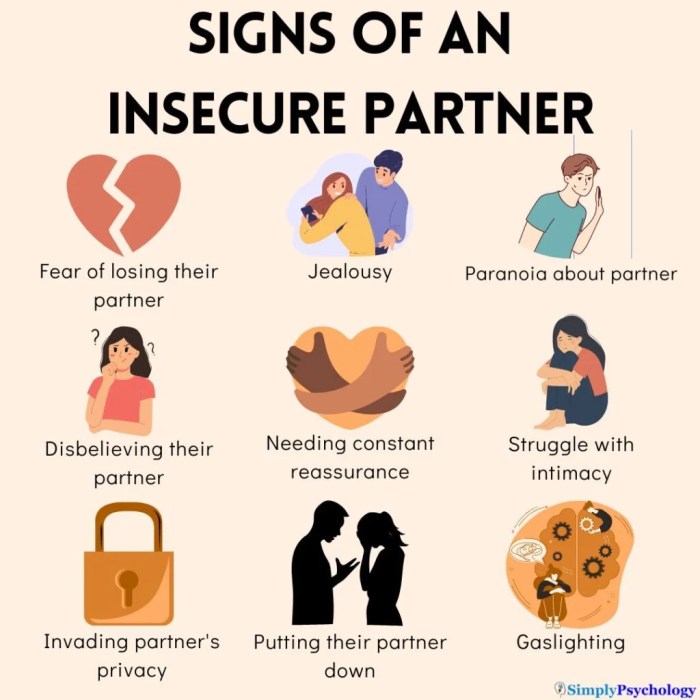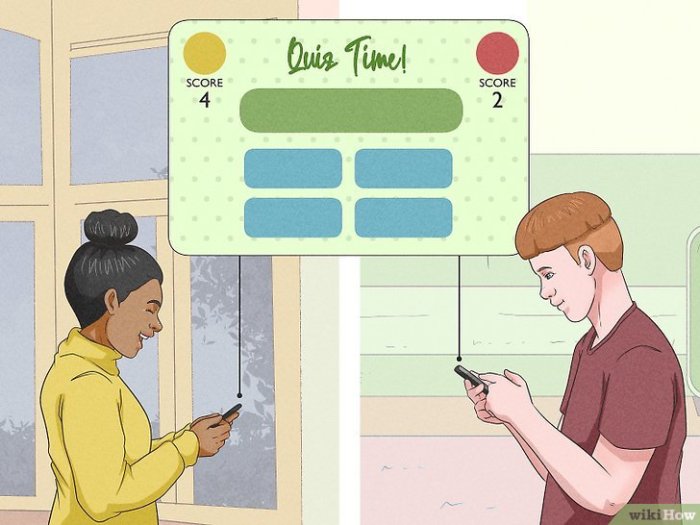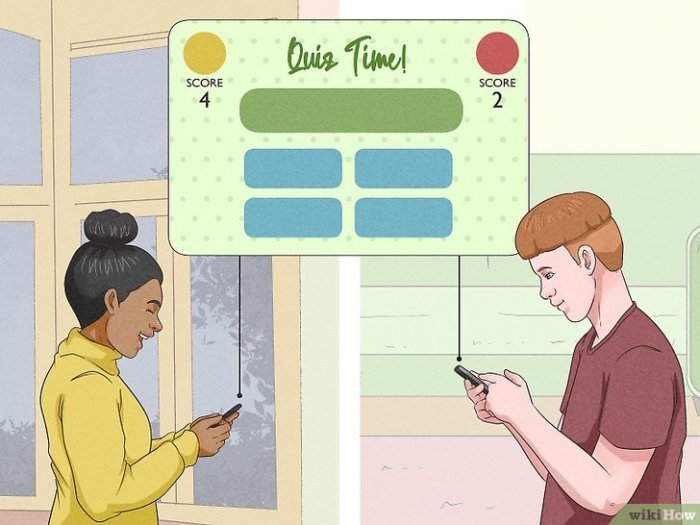Deal with a Jealous Insecure Boyfriend is a deep dive into understanding the complexities of this relationship dynamic. We’ll explore the psychological roots of jealousy, identifying different types and behaviors. The impact on the relationship will be analyzed, along with potential triggers and common misconceptions. Crucially, we’ll examine various communication styles, highlighting the crucial difference between passive-aggressive, aggressive, and assertive approaches.
Learning to recognize patterns of behavior, from possessiveness to suspiciousness and envy, will also be key to understanding the underlying issues.
This discussion covers a spectrum of strategies for effectively addressing these challenges. It includes methods for communicating openly and honestly, techniques for managing emotional responses, and crucial strategies for building trust and emotional safety. The importance of self-reflection will be highlighted, and common relationship conflicts stemming from jealousy will be examined. We’ll also discuss maintaining a healthy relationship and the importance of mutual respect and understanding.
Finally, we’ll touch on when professional help is beneficial, including different therapy options and resources for finding qualified therapists specializing in relationship issues.
Understanding Jealousy and Insecurity

Jealousy and insecurity are common relationship challenges. They stem from a complex interplay of psychological factors and past experiences. Understanding these underlying issues is crucial for fostering a healthy and supportive partnership. Recognizing the triggers and manifestations of these emotions is the first step towards addressing them constructively.Jealousy and insecurity in relationships are often rooted in feelings of inadequacy, fear of abandonment, or low self-esteem.
These feelings can manifest in various ways, creating a ripple effect that negatively impacts the relationship dynamic. They can stem from past traumas, unresolved issues, or a combination of factors. A key to addressing these issues is self-awareness and open communication.
Psychological Roots of Jealousy
Jealousy, at its core, is a complex emotional response involving a fear of losing something valuable. In romantic relationships, this fear often manifests as a perceived threat to one’s partner’s affection or commitment. This perceived threat can stem from past experiences, such as past betrayals or relationship failures. Insecurity can arise from feelings of inadequacy or a fear of not being good enough for their partner.
Dealing with a jealous, insecure boyfriend can be tough, but sometimes it helps to look at other struggles. For example, have you ever wondered what happened to Young Maylay, the rapper who was so central to the Grand Theft Auto: San Andreas soundtrack? This article dives into the mystery surrounding his career, which can be surprisingly relatable to the emotional rollercoaster of a toxic relationship.
Ultimately, though, you need to focus on what’s best for you and find a healthy way to navigate these kinds of situations.
Behavioral Manifestations of Jealousy and Insecurity
Jealousy and insecurity often manifest in various behaviors. These can range from subtle actions to more overt displays of possessiveness. Examples include:
- Constant checking of social media accounts.
- Possessive language and actions, such as demanding constant updates or monitoring whereabouts.
- Excessive questioning and suspicion.
- Withdrawing affection or engaging in passive-aggressive behaviors as a way of expressing resentment.
- Unrealistic expectations of their partner.
These behaviors can significantly impact the relationship, leading to conflict and strain.
Impact on Relationships
The impact of jealousy and insecurity on a relationship can be devastating. It can erode trust, create distance, and ultimately damage the emotional bond between partners. Constant suspicion and questioning can lead to a climate of fear and anxiety. Open communication and addressing these issues are crucial to fostering a healthy relationship.
Triggers for Jealousy and Insecurity
Triggers for jealousy and insecurity can vary significantly from person to person. They can be specific events, such as a partner spending time with an ex or receiving attention from someone else, or they can be more generalized feelings of inadequacy.
- Past relationship experiences.
- Feelings of inadequacy or low self-esteem.
- Fear of abandonment or loss.
- Specific events, like perceived infidelity or neglect.
- Unrealistic expectations.
Understanding these triggers is essential to addressing the underlying issues.
Types of Jealousy
Jealousy can manifest in various forms, including reactive and suspicious jealousy. Reactive jealousy is a response to a perceived threat, while suspicious jealousy is characterized by an ongoing, unfounded belief of infidelity.
- Reactive jealousy is a response to a specific event, such as seeing a partner interact with another person in a way that feels threatening. This type is often temporary and directly tied to the triggering event.
- Suspicious jealousy is a more pervasive and chronic form. It involves a constant fear of infidelity, even in the absence of evidence. This type can be more deeply rooted in past experiences or insecurities.
Common Misconceptions
There are several misconceptions surrounding jealousy and insecurity. One common misconception is that jealousy is always a negative emotion. However, jealousy can also serve as a warning sign that something is amiss in the relationship. It’s the
manner* in which it’s expressed that matters.
Dealing with a jealous, insecure boyfriend can be tough, especially when their possessiveness feels suffocating. It’s easy to get caught up in the drama, but sometimes, a song like “Take Me to Church” can offer a different perspective. Understanding the deeper meaning behind the lyrics can help you gain insight into the emotional dynamics at play and potentially understand their behavior better.
For a deeper dive into the song’s meaning, check out this insightful analysis on Take Me to Church Meaning. Ultimately, though, navigating these situations requires setting healthy boundaries and prioritizing your own well-being.
Communication Styles in Relationships
Effective communication is key to navigating relationship challenges. Different communication styles have different impacts on the relationship.
| Communication Style | Description | Example | Impact on Relationship |
|---|---|---|---|
| Passive-Aggressive | Indirect expressions of anger and resentment. | Withholding affection, sarcasm. | Erodes trust, creates distance. |
| Aggressive | Direct confrontation, blaming, and accusations. | Yelling, name-calling. | Damages the relationship, creates fear. |
| Assertive | Direct communication of needs and feelings without blaming or attacking. | “I feel hurt when…” | Fosters healthy communication, builds trust. |
Recognizing Patterns of Behavior

Understanding the patterns of jealousy and insecurity is crucial for navigating relationships successfully. Recognizing these patterns allows individuals to identify potential triggers and develop healthier coping mechanisms. It’s not about judging the other person, but about understanding the underlying dynamics at play. Often, these patterns stem from past experiences and unresolved emotional issues. By acknowledging these patterns, we can foster a more supportive and understanding environment.Jealousy and insecurity are not always easy to spot.
They can manifest in subtle ways, often masked by seemingly rational explanations. Recognizing these patterns is a key step in addressing the root causes and building stronger relationships. It’s about moving beyond surface-level reactions and delving into the emotional landscape driving these behaviors.
Common Patterns of Jealous Behavior
Jealousy frequently manifests in specific, recurring patterns. These patterns can provide insight into the root causes and potential solutions. Recognizing these patterns helps us understand the emotional triggers and develop healthier responses. This understanding is vital for fostering a supportive and understanding environment.
- Possessiveness manifests as a desire to control a partner’s actions and interactions. This control can be subtle, like constantly checking a partner’s phone or demanding detailed explanations for their whereabouts. It can also be more overt, involving attempts to isolate the partner from friends and family. The underlying motivation often stems from a fear of loss or abandonment.
- Suspiciousness involves questioning a partner’s loyalty and motives. This can range from constantly checking for signs of infidelity to questioning every interaction or decision. This behavior stems from a lack of trust and often reflects unresolved past experiences or anxieties.
- Envy often arises from resentment toward a partner’s achievements or relationships. This can manifest as negativity or criticism toward the partner’s success or as a desire to undermine their happiness. It stems from feelings of inadequacy or a belief that the partner’s success diminishes one’s own worth.
Role of Past Experiences
Past experiences significantly influence the development of jealousy and insecurity. These experiences can shape an individual’s perception of relationships and impact their ability to trust and feel secure. Trauma, abuse, or neglect in childhood can lead to a heightened sense of insecurity.
- Individuals who experienced abandonment or betrayal in previous relationships may carry these experiences into new ones. This can lead to a fear of repetition and an increased likelihood of exhibiting jealous or insecure behaviors.
- Early childhood experiences can significantly impact emotional development. A lack of emotional support or inconsistent parental figures can lead to a feeling of insecurity, which can be manifested in relationship dynamics.
- Past trauma, such as emotional or physical abuse, can create deep-seated insecurities and affect how individuals perceive and respond to relationship dynamics. These experiences can create a heightened sense of vulnerability and fear.
Examples of Insecurity in Relationships
Insecurity can manifest in various ways within a relationship. It’s not always about explicit displays of jealousy. Often, it’s subtle and indirect.
- A partner might constantly seek reassurance about their love and commitment. This can stem from a fear of being abandoned or unloved.
- Another example is the tendency to compare oneself to others or to past partners. This can create feelings of inadequacy and insecurity, affecting self-esteem and relationship satisfaction.
- Constantly questioning the partner’s intentions or actions. This behavior often stems from a lack of trust and a deep-seated fear of abandonment.
Underlying Issues Contributing to Jealousy
Several underlying issues can contribute to jealousy and insecurity in relationships. These issues often stem from personal insecurities or unresolved emotional conflicts. Addressing these issues is essential for building a healthier relationship.
- Low self-esteem can lead to jealousy. Individuals with low self-esteem may feel inadequate and fear losing their partner to someone they perceive as better.
- Fear of abandonment or loss can drive jealous behaviors. This fear often stems from past experiences of abandonment or rejection.
- Relationship insecurities often stem from unresolved past experiences. Trauma, abuse, or neglect can deeply impact how individuals perceive and respond to relationships. These past experiences can create a heightened sense of vulnerability and fear.
Comparison of Insecure Behaviors
| Insecure Behavior | Description | Impact on Relationship |
|---|---|---|
| Possessiveness | Controlling partner’s actions and interactions. | Stifles freedom, creates dependency. |
| Suspiciousness | Questioning partner’s loyalty and motives. | Erodes trust, creates anxiety. |
| Envy | Resentment towards partner’s achievements or relationships. | Creates negativity, hinders growth. |
Strategies for Addressing Jealousy and Insecurity
Navigating a relationship where jealousy and insecurity are present requires a multifaceted approach. It’s not about eliminating these emotions entirely, but rather understanding their roots, communicating effectively, and fostering a safe space for both partners to feel secure and respected. Addressing these issues directly and with empathy is crucial for building a healthy and lasting connection.Addressing jealousy and insecurity requires a proactive and understanding approach.
It’s not about blaming or accusing, but about identifying the root causes and implementing strategies that promote trust and emotional safety for both partners. Open communication and a willingness to work together are essential components of this process.
Effective Communication Strategies
Open and honest communication is paramount in addressing jealousy and insecurity. Avoid passive-aggressive behaviors and instead, express your feelings directly and respectfully. Active listening is just as crucial; truly hearing and understanding your partner’s perspective is key to resolving conflicts. Focus on “I” statements to express your feelings without placing blame. For example, instead of saying “You make me feel insecure,” try “I feel insecure when…” followed by a specific example.
This approach encourages understanding and avoids defensiveness.
Managing Emotional Responses
Jealousy and insecurity can trigger intense emotional responses. Developing healthy coping mechanisms is essential to navigate these moments constructively. Practice deep breathing exercises, mindfulness techniques, or engage in activities that help you regulate your emotions. Recognizing the triggers associated with jealousy and insecurity can help you anticipate and manage your emotional reactions more effectively. When feeling overwhelmed, take a step back, acknowledge your feelings, and communicate them calmly and clearly to your partner.
Fostering Trust and Emotional Safety
Trust is the bedrock of any healthy relationship. Demonstrate trustworthiness through consistency in your actions and words. Honesty, transparency, and reliability are vital components of building trust. Be reliable in your commitments, keep promises, and be open about your thoughts and feelings. Creating a safe space where both partners feel comfortable expressing vulnerabilities is essential for building a strong and lasting connection.
This emotional safety allows for open communication and encourages a deeper level of understanding.
Dealing with a jealous, insecure boyfriend can be tough, but sometimes a little perspective helps. It’s easy to get caught up in the drama, but remembering that sometimes, taking a step back and watching something lighthearted like the first trailer for Sofia Coppola’s new movie, On the Rocks , starring Rashida Jones and Bill Murray, can offer a much-needed distraction.
Ultimately, though, confronting the issue head-on and communicating openly is key to navigating these tricky relationship waters.
The Importance of Self-Reflection, Deal with a Jealous Insecure Boyfriend
Self-reflection is crucial in addressing jealousy and insecurity. Understanding your own emotional triggers and patterns of behavior is the first step toward change. Journaling, therapy, or introspection can be valuable tools in this process. Identify your past experiences that may contribute to your feelings of jealousy or insecurity. Recognize your own emotional needs and work towards fulfilling them in healthy ways.
Self-reflection allows you to understand your own role in the dynamics of the relationship and promotes personal growth.
Common Relationship Conflicts Stemming from Jealousy
| Conflict Type | Description | Potential Root Cause |
|---|---|---|
| Partner’s Social Interactions | Jealousy about partner spending time with others. | Fear of abandonment, lack of trust. |
| Partner’s Past Relationships | Jealousy fueled by past experiences. | Emotional baggage, unresolved trauma. |
| Lack of Communication | Difficulty discussing feelings openly. | Fear of confrontation, avoidance of conflict. |
| Controlling Behavior | Attempting to control partner’s actions and interactions. | Desire for control, fear of loss. |
Maintaining a Healthy Relationship
A healthy relationship is built on a foundation of mutual respect, understanding, and open communication. It’s a continuous effort, not a destination, requiring consistent work from both partners to navigate challenges and grow together. Jealousy and insecurity can significantly strain this foundation, but with the right strategies, couples can strengthen their bond and build a relationship that supports their individual needs and fosters shared growth.Maintaining a healthy relationship requires proactive steps to address potential issues and cultivate a supportive environment.
It’s about understanding each other’s perspectives, setting healthy boundaries, and actively working towards resolving conflicts. By prioritizing open communication and mutual respect, couples can build a stronger, more resilient relationship that can withstand the inevitable challenges that arise.
Mutual Respect and Understanding
Mutual respect is fundamental to any healthy relationship. It involves valuing each other’s opinions, feelings, and boundaries. Understanding each other’s perspectives is crucial for navigating differences and fostering empathy. When both partners feel respected and understood, it creates a safe space for open communication and problem-solving.
Open and Honest Communication
Open and honest communication is essential for addressing issues related to jealousy and insecurity. This involves actively listening to each other’s concerns, expressing feelings openly and honestly, and avoiding judgment. It also includes expressing needs and desires in a clear and constructive manner.
Setting Healthy Boundaries
Healthy boundaries are essential for maintaining individual autonomy and respect within a relationship. They help define what each partner is willing and not willing to tolerate. Setting clear boundaries is not about limiting freedom but about establishing clear expectations for how the relationship will function. It’s about ensuring both partners feel safe and respected in their own space.
Activities to Strengthen Emotional Connection
Regularly engaging in activities that foster emotional connection is vital. These activities can range from shared hobbies and interests to quality time spent together. Activities like cooking meals together, watching a movie, or simply having meaningful conversations can strengthen the emotional bond between partners. The goal is to create opportunities for shared experiences and emotional intimacy.
Constructive Conflict Resolution
Conflict is inevitable in any relationship. The key is to address disagreements constructively. This involves actively listening to each other’s perspectives, expressing needs and concerns without blame, and seeking mutually agreeable solutions. It is important to focus on understanding the root cause of the conflict rather than simply trying to win an argument.
Building Trust and Intimacy
Building trust and intimacy is a gradual process. It requires consistency, transparency, and vulnerability. Honesty and reliability are key components in building trust. Creating opportunities for intimacy, whether through physical affection, emotional support, or shared experiences, strengthens the connection between partners.
Questions to Understand Your Partner’s Perspective
Understanding your partner’s perspective is crucial for addressing jealousy and insecurity. Asking thoughtful questions can help you understand their emotions and concerns.
- What specific situations trigger your feelings of jealousy or insecurity?
- What are your fears regarding our relationship?
- How can I better support you in overcoming these feelings?
- What does trust mean to you in our relationship?
- What are your expectations for our future together?
- How can we improve our communication and understanding?
- What are your thoughts on our emotional connection?
- What makes you feel loved and appreciated in our relationship?
- What are your needs and desires in our relationship?
These questions aim to encourage open and honest dialogue, fostering mutual understanding and empathy.
Seeking Professional Help
Sometimes, navigating relationship challenges feels overwhelming. Even with the best intentions and understanding, certain patterns of jealousy and insecurity can be deeply ingrained and difficult to overcome independently. Seeking professional help can provide a safe and structured environment to address these complex issues.Professional guidance can be invaluable when individuals or couples find themselves stuck in a cycle of negativity, struggling to communicate effectively, or experiencing heightened emotional distress.
A therapist can offer objective perspectives, facilitate constructive dialogue, and equip individuals with practical tools to manage their emotions and behaviors. This support system can lead to a healthier and more fulfilling relationship.
Situations Benefitting from Professional Guidance
Understanding when professional help is beneficial is crucial. Seeking guidance isn’t a sign of weakness but rather a proactive step towards positive change. Significant relationship problems, such as repeated cycles of conflict, severe emotional distress, or a persistent inability to communicate effectively, all signal a need for professional intervention. For example, if one partner exhibits controlling behaviors or displays extreme reactions to perceived slights, a therapist can help facilitate a healthier dynamic.
Another example is when one partner struggles to understand or accept the other’s feelings, hindering progress in resolving the issue. In these situations, a neutral third party can help identify the root causes and provide effective strategies for change.
The Role of a Therapist in Addressing Relationship Challenges
A therapist acts as a facilitator and guide, not a judge or arbiter. They create a safe space for open communication and exploration of underlying issues. Their role involves helping individuals understand their own emotions and behaviors, as well as those of their partner. They can assist in identifying communication patterns, recognizing triggers, and developing healthy coping mechanisms.
For example, a therapist might help a couple identify and challenge negative thought patterns contributing to jealousy. By providing tools for conflict resolution and emotional regulation, a therapist empowers individuals to navigate disagreements constructively and build stronger connections.
Different Types of Therapy Options
Various therapeutic approaches can be beneficial for relationship challenges. Choosing the right type of therapy depends on individual needs and preferences.
- Cognitive Behavioral Therapy (CBT) focuses on identifying and changing negative thought patterns that contribute to problematic behaviors. It’s a practical approach that equips individuals with tools to manage their emotions and reactions. This approach can be beneficial for understanding and altering negative thought processes that fuel jealousy and insecurity.
- Couples Therapy addresses issues within the relationship dynamic, focusing on improving communication, conflict resolution, and understanding each other’s perspectives. It’s a collaborative effort involving both partners, aiming to foster a healthier and more supportive relationship. This is particularly helpful when both partners are committed to the process and are willing to actively participate in the therapy sessions.
- Trauma-Informed Therapy acknowledges the impact of past experiences on present behaviors. This approach helps individuals process and heal from past trauma, which may be contributing factors to relationship challenges. This type of therapy is essential for individuals who have experienced trauma, as it can provide a safe and supportive environment to address the emotional and behavioral effects of those experiences.
Resources for Finding Qualified Therapists
Finding a qualified therapist specializing in relationship issues is an important step. Online directories, recommendations from friends or family, and mental health professional organizations can be helpful resources. Ensure the therapist is licensed and experienced in working with relationship problems. Check their credentials and reviews before committing to a therapist. Furthermore, consider factors such as the therapist’s approach to therapy and their personal style.
Comparing and Contrasting Therapy Types
| Therapy Type | Description | Strengths | Weaknesses |
|---|---|---|---|
| Cognitive Behavioral Therapy (CBT) | Focuses on changing thought patterns. | Effective for addressing negative thoughts and behaviors. | May not address underlying trauma. |
| Couples Therapy | Focuses on improving communication and resolving conflicts. | Can help both partners understand each other’s perspectives. | Requires commitment from both partners. |
| Trauma-Informed Therapy | Acknowledges the impact of past experiences on present behaviors. | Helps process and heal from past trauma, addressing potential relationship challenges. | May be more intensive and time-consuming than other approaches. |
End of Discussion: Deal With A Jealous Insecure Boyfriend
Ultimately, dealing with a jealous and insecure boyfriend requires understanding the root causes, communicating effectively, and building a strong foundation of trust and emotional safety. By recognizing patterns of behavior, implementing effective strategies, and prioritizing mutual respect and understanding, you can navigate these complexities and foster a healthier, more fulfilling relationship. Seeking professional help when needed is also a vital component of this journey.




